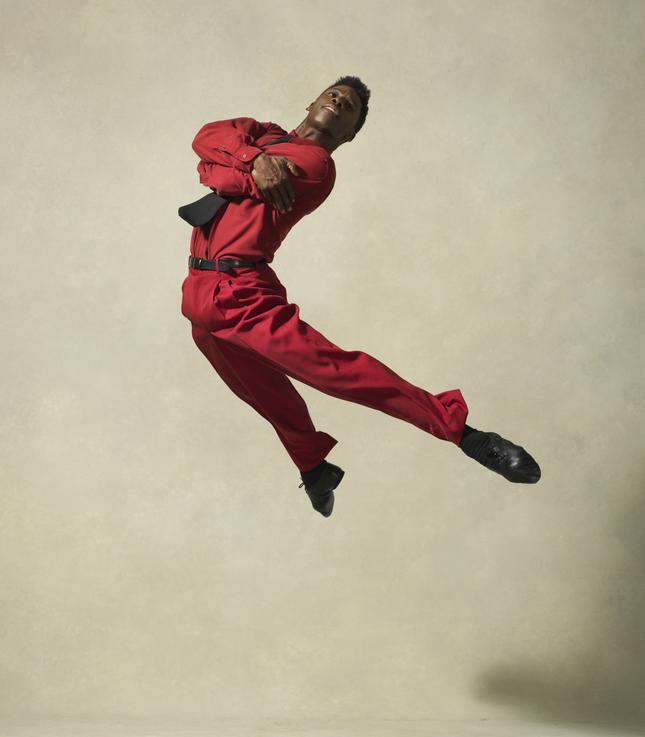An Intense ‘Hamlet’ Without Words
By • April 18, 2016 0 1372

We are coming up on April, and April is the month of William Shakespeare — who was born on an April day in 1564 and died on an April day 52 years later, 400 years ago. (We know he died on April 23, which may or may not have been his birthday.)
Inevitably, we will talk about words, words, words. And, inevitably, we will talk about “The Tragedy of Hamlet,” Shakespeare’s most famous play, a play voluminously full of words.
Yet, right now, we have a “Hamlet” without words, and it’s not at Synetic Theater. It is instead the “Hamlet” of choreographer and Ballet Austin Artistic Director Stephen Mills. This “Hamlet” is an intense, under-two-hours ballet fueled by the driving, insistent music of Philip Glass and performed in grand, classic and very physical and emotional style by the Washington Ballet at the Kennedy Center’s Eisenhower Theater. It runs through April 3.
Watching the production — beautifully and starkly danced in a modernistic set — is to get to the heart of the story, without necessarily getting the full effect of the layered, dense meaning within the play. Stripped of words, danced by a high-energy cast and jet-fueled by the music of Glass, the play becomes something of a staged action movie.
Dressed up in high contrast — peopled by not just one ghost, but apparitions that dance in visually effective unison with Hamlet — Mills’s version sets key moments in “Hamlet”: the celebration of the new king and queen, the play-within-a-play, an achingly beautiful duet by Hamlet and Ophelia, the confrontation between Gertrude and Hamlet, the killing of Polonius, the descent into madness, death and funeral of Ophelia and the climactic duels and deaths of, well, just about everyone.
This is dance as effective, affecting storytelling, highlighted by color: Hamlet is in red and most everyone else is in black and grey. In ensembles and solos, the dancers manage to convey the tensions — both toxic and intoxicating — of the court. It’s a speeded-up process that starts out with the sheen of outward beauty, but soon exposes the underlying struggle between guilt and anger, love and hate. The tools are not words, but muscle and bone, pointe and flight, wings and knuckles and leaps.
In this “Hamlet,” there is a certain amount of clarity about what’s what: very little of the what-to-do-what-to-do? grappling by Hamlet finds its way into the language of movement; everything is directed toward a resolution that builds and builds with a kind of inevitability. The music by Glass is nervous, string-filled, pushy, almost whip-like in its effect.
Nothing illustrates the power of this approach more than the role of Ophelia, danced in this production by the remarkable newcomer Venus Villa. Slight of build, she seems on the verge often of breaking into two. She’s vulnerable but also crazy-strong, well matched with Brooklyn Mack’s high-flying Hamlet. Her growing madness and her loss is devastating, in ways that few theatrical or cinematic versions have approached.
You lose some things in “Hamlet” as a dance, but the way that Mills recasts “Hamlet” as pure story is breathtaking in its own way. It’s remarkable how much can be said without words and how much can be done when words are whittled away cleanly in the play’s climax. You end up watching carefully, trying not to miss when Claudius puts poison in the chalice and when Gertrude drinks the wine, even as Hamlet and Laertes make the whole world a duel.
It reminded me of the time, a long time ago, when I was convinced to don tights and become an extra (Osric 2) in a local production of Tom Stoppard’s frantic “15-Minute Hamlet,” and how quickly the time passed. A three-hour play compressed itself into bodies and stories. The late British film director Lindsay Anderson once staged a version of the play that began with all the dead bodies on the stage and commenced the story from that point.
After a while, the ballet takes on a curious aspect: it is a ghost of itself, a skeleton of every “Hamlet” you’ve ever seen on stage or screen. All the Hamlets seem to flicker in the back of your head, filling in what you’re watching, captivated.

